MOJ
eISSN: 2576-4519


Mini Review Volume 9 Issue 1
Department of Biomechanics and Sport Engineering, Gdansk University of Physical Education and Sport, Poland
Correspondence: Wlodzimierz S. Erdmann, Dept. of Biomechanics and Sport Engineering, Gdansk University of Physical Education and Sport, Gdansk, Poland, EU, Tel 48-605304939
Received: March 06, 2025 | Published: May 2, 2025
Citation: Erdmann WS. Physical activity of Ancient Egyptians. MOJ App Bio Biomech. 2025;9(1):40-44. DOI: 10.15406/mojabb.2025.09.00223
Biomechanics helps in description of human activity. The purpose of this article is presentation of body activity of ancient Egyptians during several situations while being in statics and during locomotion. Ancient people in Egypt during body activity rarely used chairs as it is today. They usually acquired standing, kneeling, or sitting positions directly on the ground. During locomotion they mostly walked. They also swam and row moving large ships. During the wars they usually fought directly with hand weapons.
Keywords: ancient Egypt, body activity, static actions, locomotion
Biomechanics differentiate human movement into three sections:
The purpose of this article is presentation of body activity of ancient Egyptians during several situations while being in statics and during locomotion.
Being in contemporary Egypt one can see several historical artefacts presenting body positions of ancient Egyptians. The author visited and photographed five places, namely:
Physical activity
Types of physical activity
As it is today, ancient Egyptians assumed body positions as follows:
Activities while standing
Standing was very common in ancient Egypt comparing to contemporary time where sitting is very common. Gods and pharaoh were presented in standing positions. Engravings of gods or humans were usually presented in the frontal plane (trunk and upper extremities), and in sagittal plane (head and lower extremities) (Figure 1a).
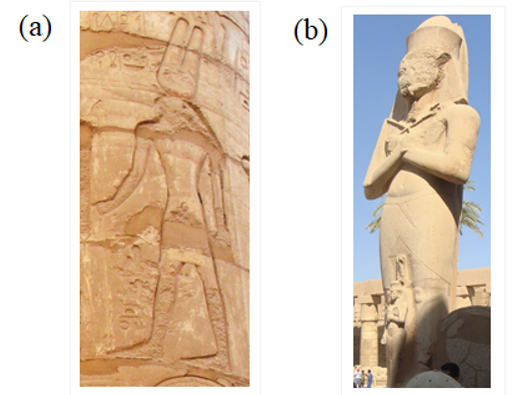
Figure 1 Standing positions of: (a) God Amun and (b) pharaoh Ramesis II with his wife Nefertari (below the knees).
Pharaoh had his crossed upper extremities positioned near the chest and holding king’s insignia. In Luxor, at the Temple of Karnak, there are many standing monuments of pharaohs (Figure 1b).
Standing positions were assumed during several works of officials, servants, workers, soldiers (Figure 2).

Figure 2 Standing positions of: (a) official; (b) woman works while bent over; (c) man working with a sheet of fabric having feet apart.
In the Figure 2b position with straighten lower extremities and leaning a trunk is shown. This is especially dangerous for lower part of the vertebral column and surrounding tissues. The distance of the leaning trunk’s centre of mass according to the axis of rotation of lumbar vertebrae is high. In this case moment of gravity force is also of high value and this can cause pain of lower back. The most health problems of contemporary workers in the United States deal with lower back pain.1 The author of this paper with co-workers analyzed for a court a heart attack of a worker who assumed wrong position while lifting a very heavy engine.2
Activities while kneeling
It is interesting, many people in ancient Egypt while working were in the kneeling position. This is because they did not use tables, which were very rarely. Instead, they worked on the ground (Figure 3).
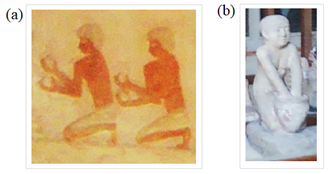
Figure 3 Workers at kneeling position during different activities. One can notice feet were not in plantar flexion position but in dorsiflexion with the toes curled up.
Kneeling was also present while worshipping the god (Figure 4), also when the captives showed their submission to their victors, and slaves showed submission to their owners.
Activities on four extremities
Lack of tables and larger area of elaborated fabric or skin enforced workers to do some jobs resting on four extremities. Usually hands and knees played a role of supports resting on the ground (Figure 5).
Activities while sitting
The sitting was most often performed on the ground or on the feet (Figure 6a & 6b). Some educated people who were employed as writers assumed sitting position on the pillow situated on the ground with lower legs directed towards centre (Figure 6c). Stools were also in use.
It is interesting that no other persons were depicted in a sitting position in a chair except of the gods, pharaohs and their wives or people of high social rank. Like the tables, chairs were also very rarely in use (Figure 4 & 7).
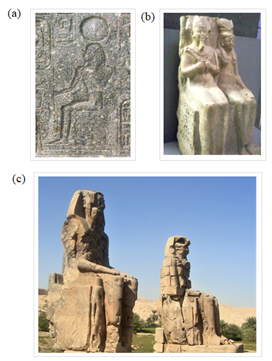
Figure 7 Sitting positions on chairs were reserved mostly for rulers, both mentally (gods) and physically (pharaohs): (a) god; (b) pharaoh with his wife; (c) colossi of Memnon.
In contemporary times some workers are still sitting on the ground while working. Figure 8 shows workers making pots from hard material. They worked near the Valley of the Kings, Luxor, Egypt (in 2012). Many other people assume often sitting position using chairs, armchairs, or couches while working, travelling by car, watching television programs. Figure 9 shows children in the city of Torun, Poland, EU. They watched entertainment of a clown while sitting on a cobbled street. Unfortunately, today children in the developed countries spend much of their time sitting in chairs in front of computer or TV screens.
Activities during locomotion
Walking, as it is today, was the main form of locomotion of ancient Egyptians. It was used during everyday life, household work, agriculture and animal breeding (Figure 10), during processions devoted to gods and bringing gifts for pharaoh (Figure 11a), during military purposes (Figure 11b).
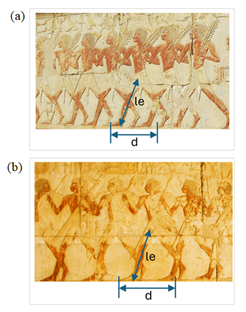
Figure 11 Ancient Egyptians during marching activity: (a) a procession of people with gifts, (b) marching soldiers with weapons. Comparing stride length d to the length of lower extremity le in (a) stride length is about 95 % of the extremity’s length and in (b) this value is about 107 %.
From the biomechanical point of view one can notice at Figure 11 the stride length is of a high value. In both frescos a stride length is about lower extremity’s length. It is hard to say is it from reality or just artist’s vision. Ordinary people have different stride lengths. It depends on age, fitness, speed of movement and other elements. When looking at present marching soldiers who are of similar age, fitness and have the same velocity of movement their stride length is about 80 % of lower extremity’s length. In addition, ancient soldiers marched barefoot, and contemporary soldiers use special military boots. Only in special situations contemporary people have very long strides, e.g. when they are in a hurry or they take part in a sport competition.
Ancient workers assumed quite different body positions while being involved in the construction of pyramids. At first, very heavy blocks were cut from quarry near the Assuan. Then, they were transported by ships down the Nile River. Next, they were pulled on rollers to the site of pyramids. At last, the toughest part of the work was done while moving stone blocks upward to build the pyramids. All those works involved thousands of workers of high muscle strength and assuming different body positions.
Ancient Egyptians used for locomotion two-wheeled chariots. This device was very handy. It was light in construction, usually with no roof and easy to get on. The chariot was pulled by one or more horses. A coachman could start a ride very quickly. While riding he assumed a standing position. The same was for a passenger. An example of ancient Egyptian chariot is presented in Figure 12a. The rider when using a bow needed to possess high level of equilibrium (Figure 12b).
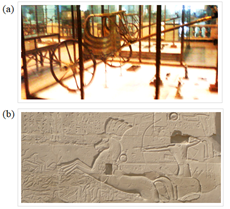
Figure 12 An example of ancient Egyptian chariot: (a) light and easy to get on; (b) standing position of an archer.
Other locomotion takes into account displacement on water. People swam in the Nile River and near the sea shores. Also goods were transported by the Nile. Another water-related locomotion involved the movement of large rowing boats and ships for commerce, transporting large blocks of rock for building of pyramids, and military or funeral purposes (Figure 13).
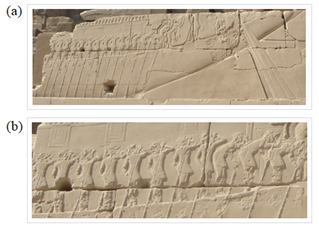
Figure 13 Large rowing ship involved propelling by many oarsmen; before starting rowing a crew welcomes important passengers, some members of crew welcome the guests by bending bodies: (a) general view; (b) detail.
Carrying goods
From the oldest time people were involved in carrying goods – vegetables, animals, firewood, wood or clay for building a house. They also carried children and wounded soldiers. For transport they used mostly their own body. The most often parts of the body for carrying goods were, as it is today, hands (Figure 14). At some images of ancient Egyptians carrying goods, one can see these goods are held far away from the trunk. This involves larger moment of force of carried item and then larger moment of force of active muscles.
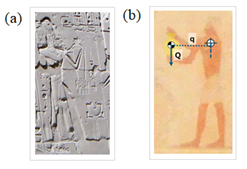
Figure 14 Carrying goods far away from the trunk involves larger muscle activity: (a) holding a jar; (b) Q – force, q – force arm.
Other parts of the body involved in carrying goods are: shoulders, trunk, head. This is seen in contemporary Egyptians.3 Especially when goods are supported by the head one needs to keep his or her body straighten and vertical.
Fighting
People have been fighting against animals and among themselves for centuries. Fighting involves muscle activity of the whole body. Ancient fighters used boxing and wrestling. They also used different weapons: clubs, daggers, swords, bows. The use of these weapons required different body positions during attacking. For defense fighters used shields kept by one upper extremity. During direct fight fighters usually kept there body smaller by flexion of hips and knees and by leaning the trunk.
Ancient people in Egypt rarely used chairs as it is today. They usually acquired standing, kneeling, or sitting positions. Often they sat directly on the ground.
Some works in ancient Egypt were done being supported on four extremities. This is still happen in contemporary times, e.g. during fixing machines or during soldiers’ activities.
During locomotion ancient Egyptians mostly walked. Riding in the chariot was reserved for higher class of people. This is in contrast with contemporary time where people usually sit in the chairs and ride the cars. Locomotion with the use of lower extremities, as was often the case in ancient Egypt, contributed to better fitness and hence better health of the Egyptians. Unfortunately, nowadays people often use road transport on a daily basis and their efficiency is reduced.
The author presented forms of carrying goods here in ancient Egypt and in another article in contemporary Egypt.3 While in many countries travelers uses a suitcase on wheels, Egyptians still carry goods using their bodies, just as they did in ancient Egypt.
None.
None.
The author declares that there is no conflict of interest.

©2025 Erdmann. This is an open access article distributed under the terms of the, which permits unrestricted use, distribution, and build upon your work non-commercially.